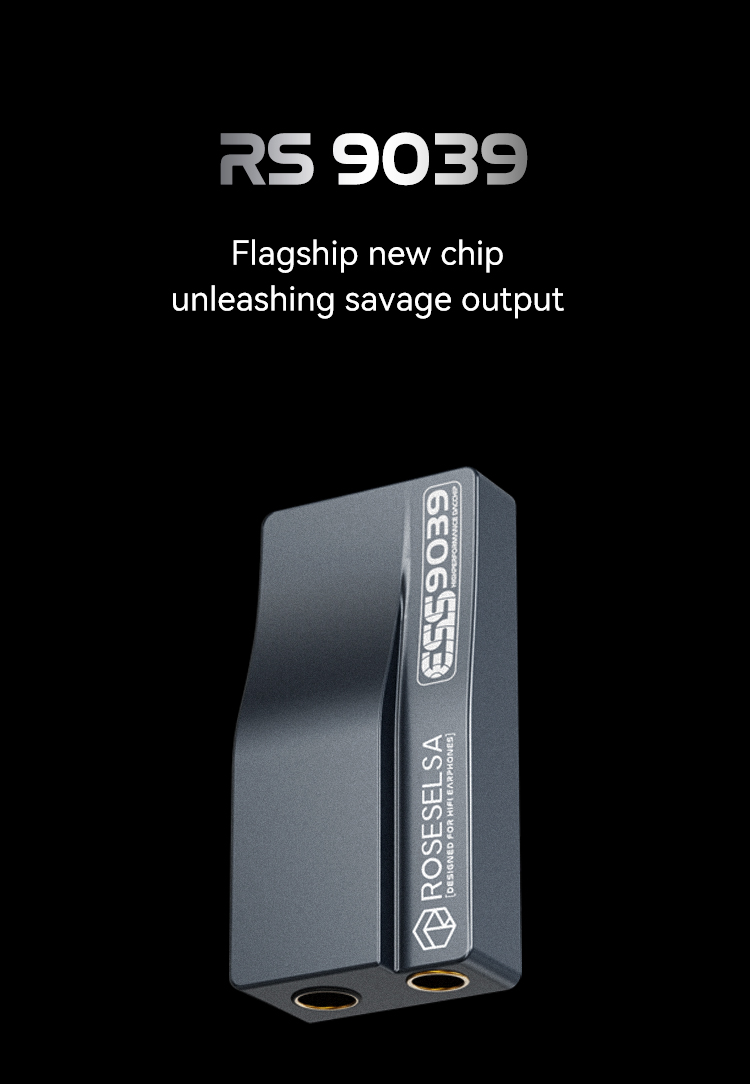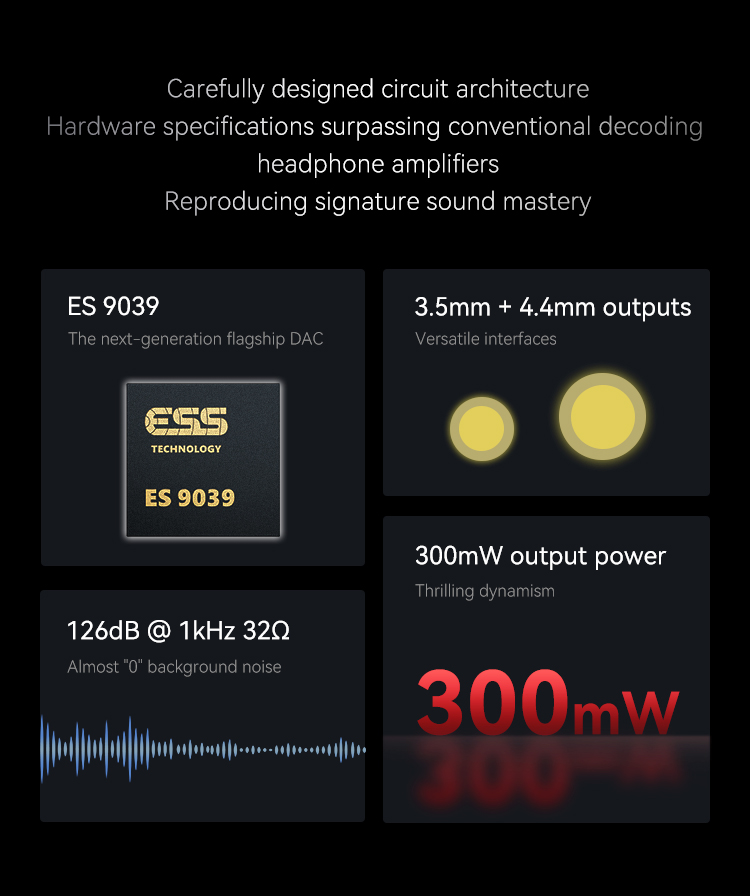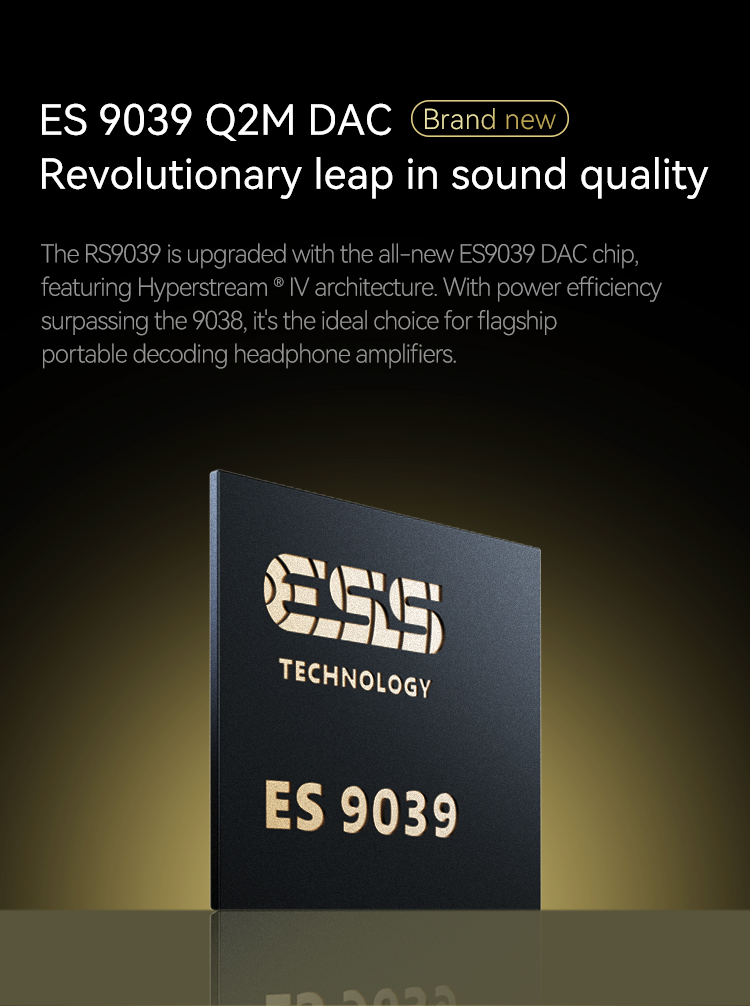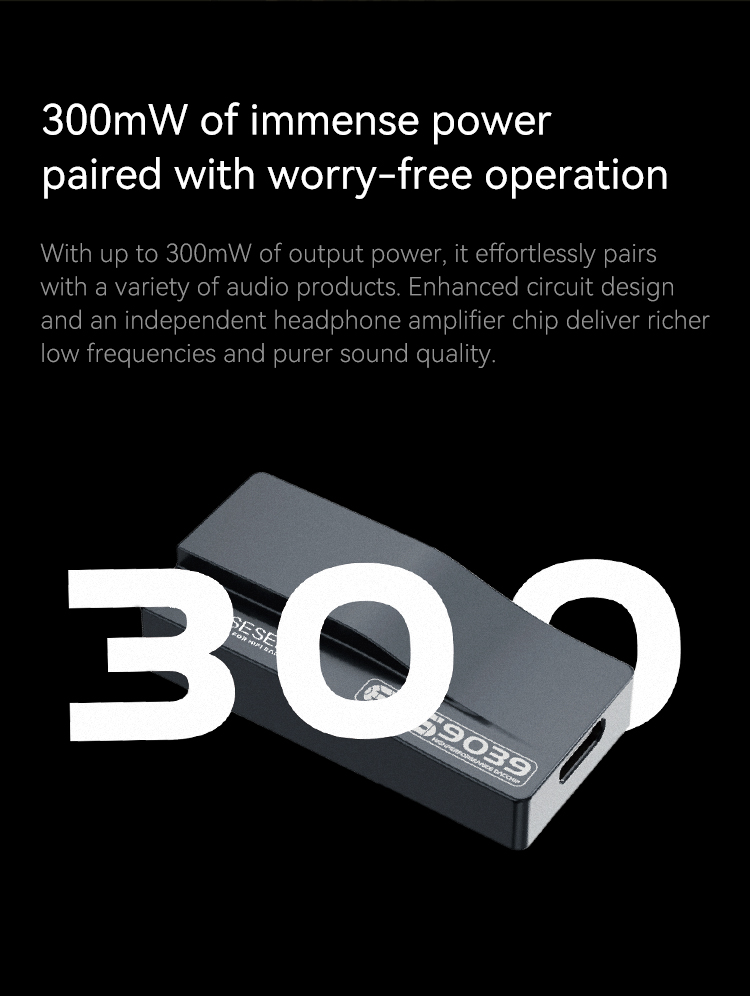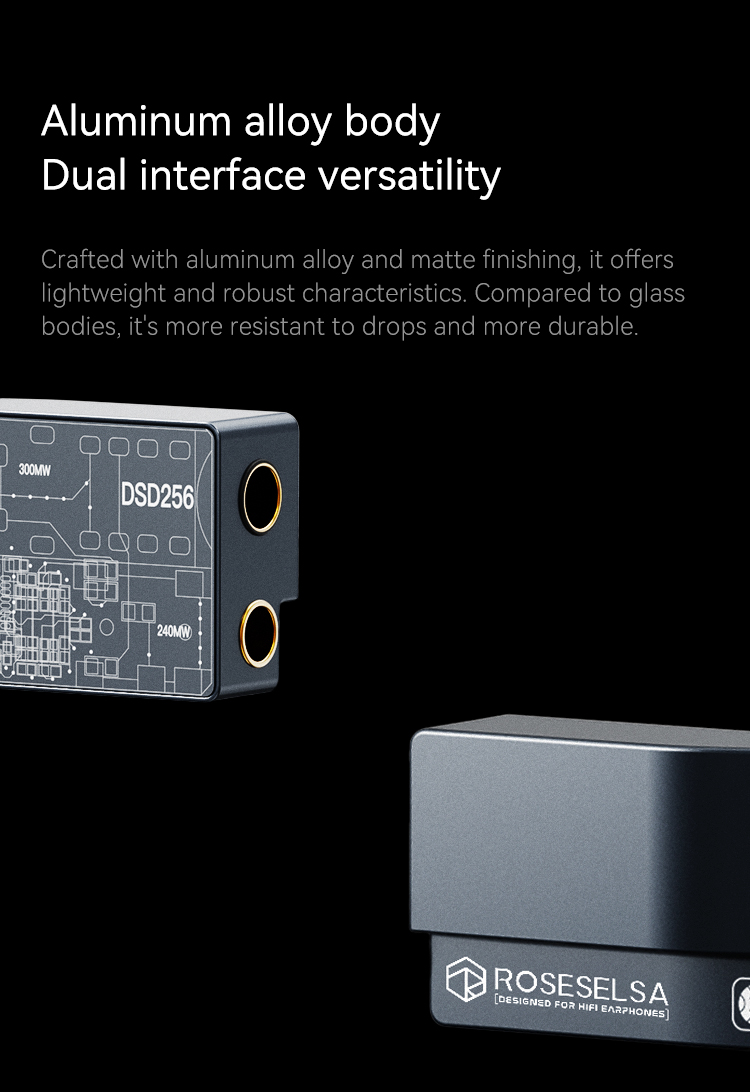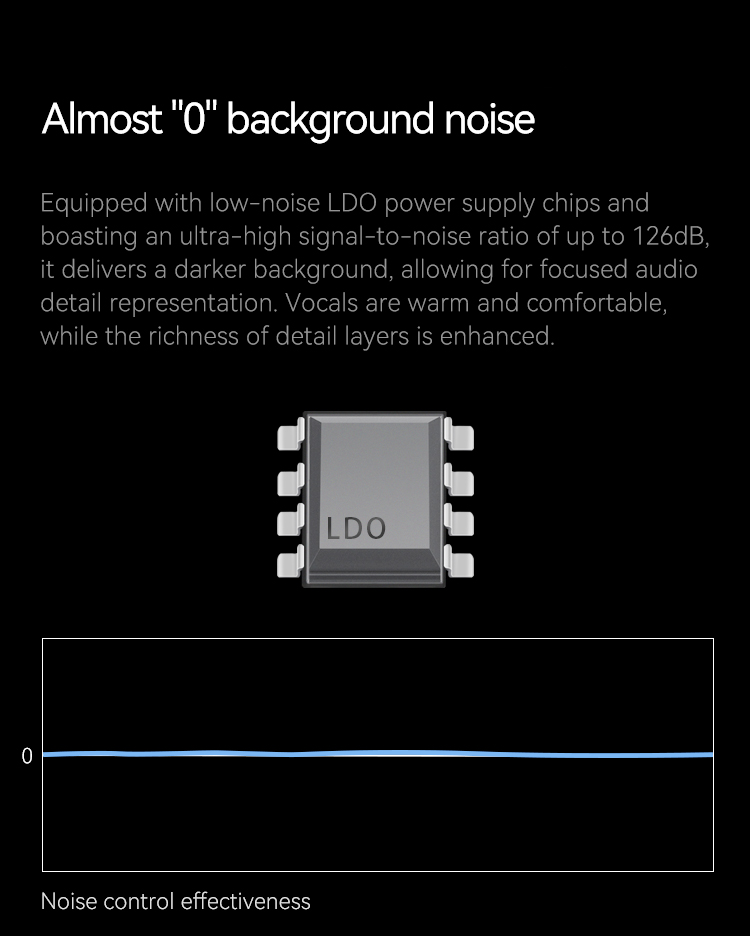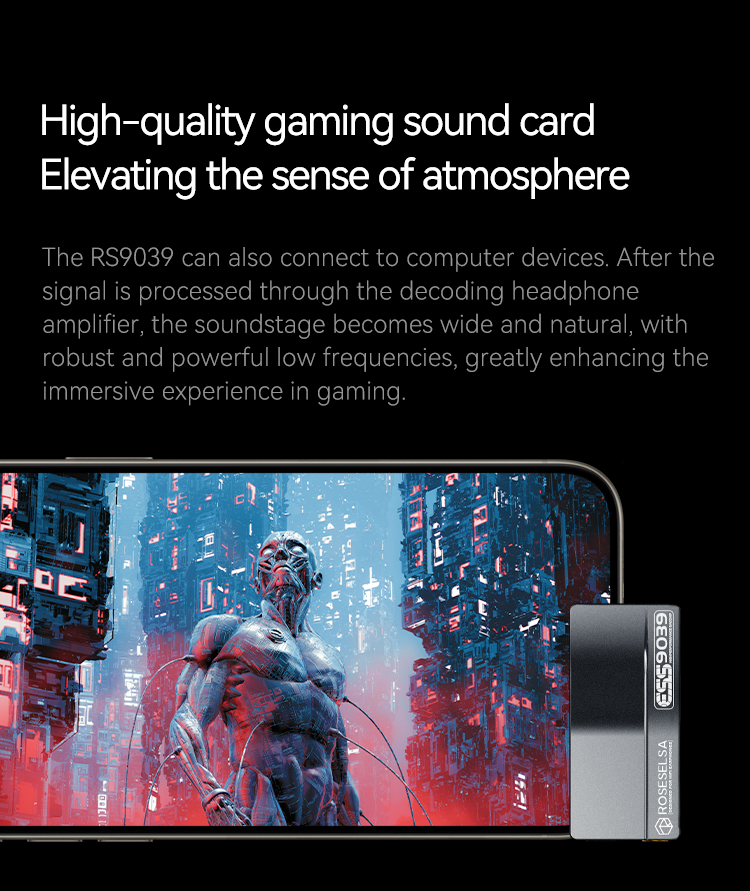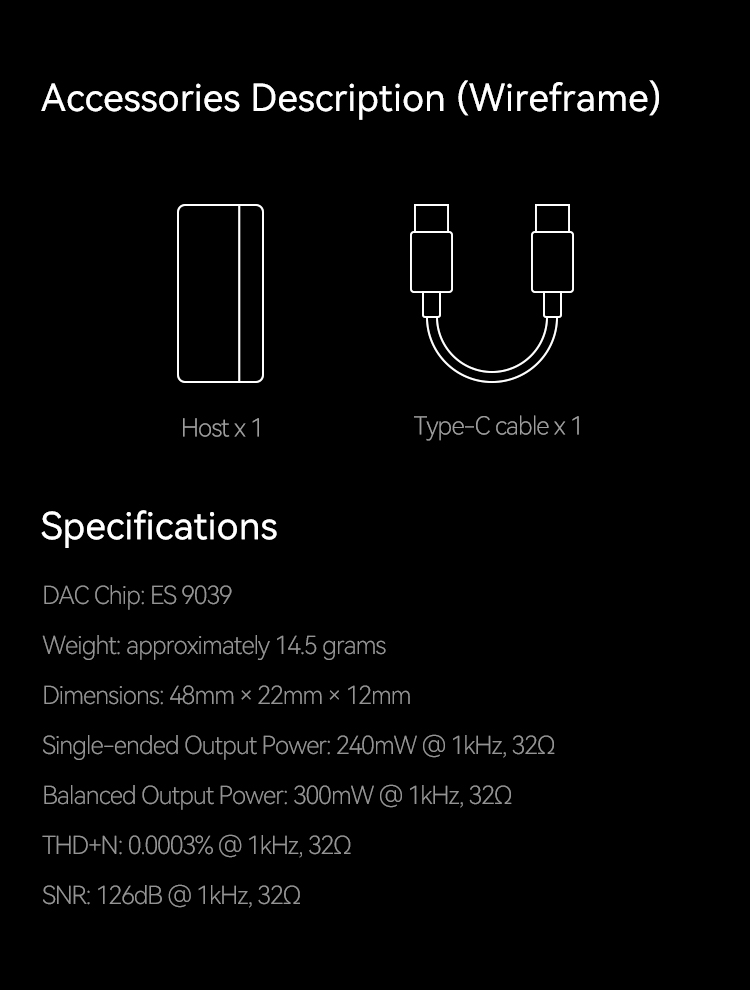General Information

Features:
- Portable Flagship-Grade DAC/AMP
- New-Gen Flagship ES9039Q2M DAC Chipset
- Ultra-Clear Ouptut With Almost “0” Background Noise
- Immensively Powerful Output(300mW)
- Dual Headphone Outputs(3.5mm+4.4mm)
- CNC-Machined Aluminum Alloy Body
- Compact and Mighty
- Detachable Type-C Connector cable
- High-Quality Sound Reproduction
ROSESELSA has released its all-new flagship-level portable DAC/AMP, the ROSESELSA RS9039. This mighty device is compact in nature and houses the next-gen flagship ES9039Q2M 32-bit DAC chipset. ROSESELSA has also designed a high-power amp section that produces a powerful amplification, promising a strong 300mW output through the balanced output. It has been designed to take your listening experience to all-new heights with its outstanding capabilities. Use the RS9039 with your smartphone, laptop, or any other device and enjoy quality sound anytime, anywhere.
Experience The Next-Generation of Flagship DACs:
ROSESELSA is the first DAC in the portable segment to feature the all-new ES9039Q2M flagship DAC chipset. It features HyperStream IV Architecture promising efficient high-quality sound performance. The DAC comes as a successor to the widely acclaimed ES9038Q2M and ensures best-in-class performance with ultra-low distortion and high SNR performance. Prepare to open your listening senses with the ultimate performance of the RS9039.Compact Powerhouse:
ROSESELSA has featured a high-power amp section on the RS9039. The DAC has a strong output power rating of up to 300mW(Bal) and 240mW(SE). It can be paired with a variety of HiFi audio gear including both sensitive as well as high-power requiring IEMs and Headphones. With its enhanced circuit design and independent headphone amplifier chipset, the RS9039 delivers rich and dynamic sound with ultimate clarity.Ultimate Build Quality:
ROSESELSA RS9039 features a compact footprint with solid build quality. The device is built using CNC machining process with high-quality aluminum alloy material. The chassis has a rich matte finish, it looks and feels amazing and is durable as well.Dual Headphone Output Ports:
ROSESELSA RS9039 features dual headphone output ports. It features a 3.5mm single-ended and a 4.4mm balanced headphone ports. In today’s time, these two are the most widely used termination options, so you get to experience high-quality sound directly with your IEMs/Headphones.Clean Output With Almost “0” Background Noise:
ROSESELSA RS9039 is equipped with low-noise LDO power chips. It achieves an ultra-high SNR performance of up to 126dB, the output is clean, crisp, and accurate. There is no audible noise floor even with the sensitive IEMs/Headphones. Enjoy your favorite music with ultimate level clarity and sound decoding with enhanced response.